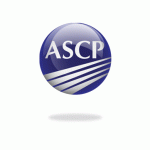 Producing New York’s workforce is one of nine initiatives that SUNY will focus on this year, as outlined by Chancellor Zimpher in her State of the University Address.
Producing New York’s workforce is one of nine initiatives that SUNY will focus on this year, as outlined by Chancellor Zimpher in her State of the University Address.
SUNY will throw the weight of its systemness behind two key programs to achieve this goal. Strategic enrollment management will be used to determine workforce demand by region and program offerings and enrollment patterns at campuses locally will be adjusted to directly meet those needs; and co-operative education will be brought to scale, incorporating paid internships for students in their field of study into the curriculum, helping students gain invaluable work experience while making money and giving them a job placement edge upon graduation. Not to mention the benefits co-op presents for employers and the state workforce as a whole.
But SUNY’s efforts aren’t contained to what can be accomplished at the system level. Each campus will contribute. For example, three of our campuses – University at Buffalo, Stony Brook University, and SUNY Upstate – are partnering with the American Society for Clinical Pathology (ASCP) to create more medical laboratory jobs in New York by expanding educational access to laboratory science programs.
The partnership, which also includes a coalition of clinical lab organizations, government agencies, and industry partners, is being made through the Clinton Global Initiative (CGI) and comes with a commitment to increase the number of graduating laboratory professionals in New York by 10 percent over the course of a five-year project, upping the annual graduation rate of 237 to 355.
The project will develop classrooms and distance learning curricula, create a coordinated network of clinical rotation sites, create an accelerated technician-to-technologist program, and develop an electronic-instrumentation simulation laboratory.
In the long-term, it is expected to create a model for New York State that can be implemented throughout the U.S.
The project will ensure that hospitals and clinics are staffed with well-trained, qualified personnel to provide accurate test results and maintain high standards of safety in the laboratory. It will also address factors that are contributing to the shortage of such personnel, including an aging workforce and the recent closure of clinical laboratory science training programs. According to the ASCP, in 2010 the average age of the laboratory workforce in the U.S. was 49.2, compared to 43.6 four years earlier.
In New York, six out of nine laboratory departments surveyed reported that more than 10 percent of their employees planned to retire within five years, and while the New York State workforce requires approximately 640 new laboratory professionals every year, it’s producing only 237 graduates annually.
John E. Tomaszewski, MD, professor and chair of the Department of Pathology and Anatomical Sciences in the UB School of Medicine and Biomedical Sciences and ASCP’s immediate past president attended the CGI annual meeting last September in New York City, where ASCP announced the Expanding the Laboratory Workforce for the 21st Century initiative.
“ASCP is working to create a significant solution to the challenge of job creation,” he said. “The SUNY partners already on board like UB, Stony Brook University and Upstate Medical in Syracuse are dedicated to piloting this program in New York and creating a strong model for laboratory workforce development that we can to expand into other states in the near future.”

